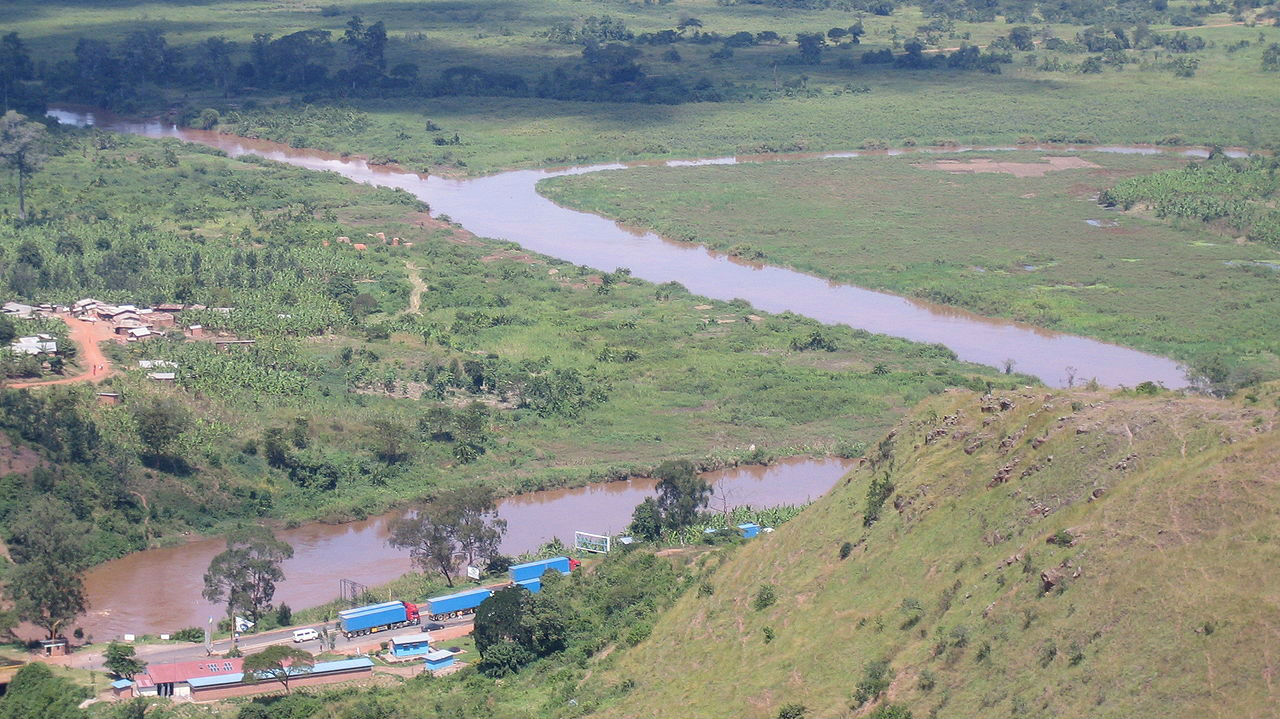A Trans-Africa Inland Waterway System?

The Nile River has been navigable since the time of the pharaohs some 4,000 years ago, as have sections of the Niger, Benue, Congo and Zambezi Rivers.
Boats today carry passengers and freight across Lake Malawi, Lake Victoria and Lake Tanzania while riverboats provide essential services along sections of the Niger, Benue, Congo and Nile Rivers.
There may be scope for future African leaders to borrow the European precedent of connecting navigable rivers to develop an inland, canal-based transportation network.
Inland waterway systems have also been successful outside Europe. In the U.S., inland waterway freight transportation can move bulk and container shipments of over 100 TEUs at lower cost per unit distance than either truck or railway transportation.
Such a system would benefit the African continent, which remains largely dependent on fragmented land transport systems. While Cecil John Rhodes sought to build a North – South, Cape-to-Cairo railway line, African railway networks remain regional with their own distinctive railway gauge. Paved road networks are to be found in major cities and in certain regions, but only a network of unpaved roads is available for most of the continent’s long distance connections for the truck transport industry. Trucks carry most of Africa’s long-distance freight.
The headwaters of several streams and rivers that empty into Lakes Tanzania and Victoria originate in the same geographic area between the lakes, in sufficiently close proximity to each other to perhaps warrant linking them by building navigable canals to transit shallow draft vessels.
Lake Victoria empties through a series of smaller lakes and waterfalls into the White Nile River, perhaps with the potential to build navigation locks to connect the Upper Nile River to Lake Victoria. Lake Tanzania empties into the headwaters of the Congo River that has several navigable sections. There may be scope to develop river navigation between Lake Tanzania and the navigable sections of the Congo River, allowing access to Lake Victoria. It may also be possible to develop future canal navigation between navigable sections of the Congo River and its mouth at the Atlantic Ocean.
At the present time, Nigeria and Egypt have surpassed South Africa as Africa’s leading economies. A navigable inland waterway system could offer a much shorter sailing distance than an ocean voyage through the Strait of Gibraltar. In southern Sudan and northeastern Congo, headwaters flow from the same region into the White Nile and Congo Rivers, allowing for possible evaluation of building a navigable canal to link the two rivers.
The development of a trans-Africa navigable inland waterway system would require political agreement and political cooperation between several national governments. While some regional governments operate and subsidize the operation of railways, they collect a tariff from the truck transportation sector and may be expected to do likewise on vessels that sail along waterways and through navigation locks located within their respective jurisdictions. Vessel operators would likely have to pay transit fees to pass through navigation locks along the future navigable waterway. It may be possible for inland water transportation to be competitive with trucks to transport freight.
During the time of the pharaohs, navigable canals were believed to connect the Nile River to the Red Sea. A redevelopment of such a waterway would connect a possible inland trans-Africa waterway to ports along the coast of Saudi Arabia and as far north as the Gulf of Aqaba.
The dredging precedent of the Suez Canal may be possible for some distance between the Red Sea and Nile River. Modern water-pumping technology can move massive volumes of water to higher elevations and facilitate canal navigation from the Red Sea close to the Nile River.
In the southeastern region, a section of the Zambezi River is navigable with the potential to develop canal navigation north to Lake Malawi. There may be a basis to construct a navigable canal between Lakes Malawi and Tanzania, using the beds of several rivers and streams that flow in the area between the lakes, in northeastern Zambia. It may further be possible to develop navigation between two large dams on the Zambezi River, Kariba and Cabora Bassa. Construction of special canals along a series of rapids could provide river navigation to the Indian Ocean.
To achieve a major revamp of Africa’s transportation systems, engineering students attending colleges and universities across Africa could conduct research into the possibility of a modern trans-Africa inland waterway transportation network.
The opinions expressed herein are the author's and not necessarily those of The Maritime Executive.
